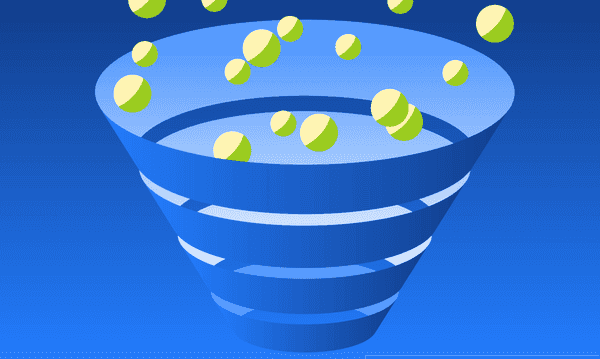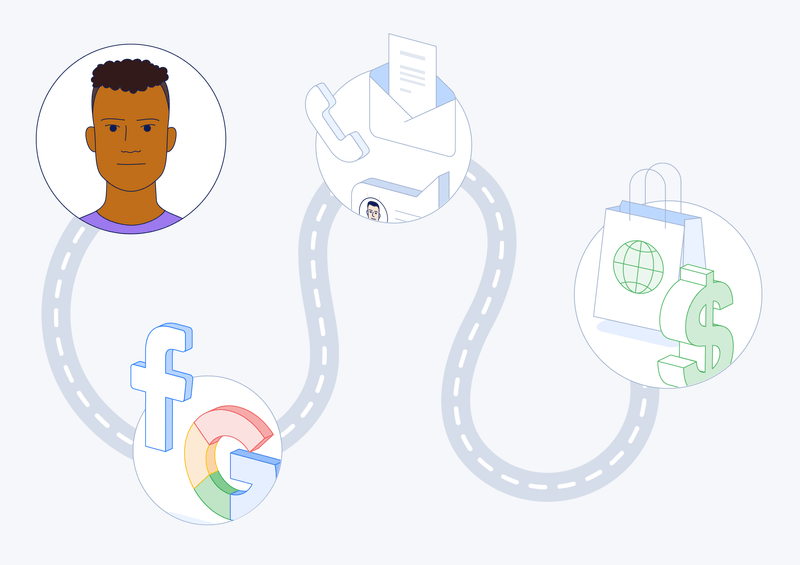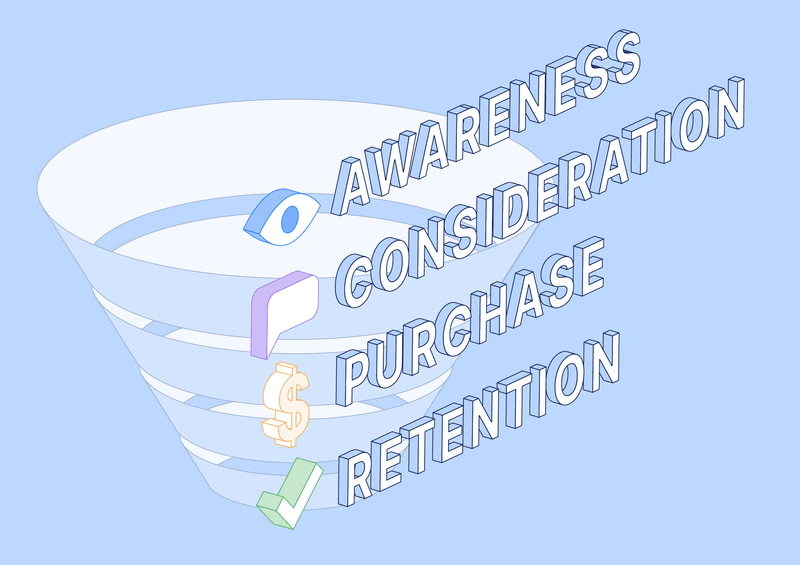What Is a Sales Funnel? Practical Steps to Close More Deals.
In this blog post, you will get an overview of one of the hottest — and most fundamental — concepts in the world of business, located at the intersection of sales and marketing: the sales funnel.
6 min read

Christopher Rees
Jan 26, 2021

Walking a mile in a prospect’s shoes
To explain what a sales funnel is, we’ll start with an analogy. Imagine your leads as hikers on a trail. They don’t know exactly how to reach their final destination, but they really need to get there. Some of them are still at the trailhead, perhaps even debating whether to even step onto the path, while others are somewhere in the middle of the route or even just around the bend from the summit.
Your goal is to help them accomplish their mission in a quick, convenient, and effective way. So, you create checkpoints that split up the long and scary path into sections. Now you can understand how close each hiker is to the finish line and can easily notice anyone who is staying too long in the same section or maybe abandoning their mission completely. With this insight, you’re able to provide them with relevant hints, encouragement, and professional advice so they can reach their destination without getting distracted or lost — or making a wrong turn that leads them to your competitor.
Once those happy and loyal hikers reach their final destination with your assistance, your goal is to remain a trusted advisor and guide them through all the other exciting paths that you can tread together (your other products and services).

Benefits of a sales funnel
A sales funnel brings visibility and control, enabling you to set the key milestones for the buyer’s journey and lead your prospects along the path you’ve laid out, from possibly having no idea what your product is, right through to becoming not just buyers but lifelong loyal customers.
In addition, a sales funnel enables you to organize your leads and customers into groups according to their status, interest, and engagement level. Moreover, it enables you to focus on the most critical conversion points in the customer journey and pinpoint the areas where you need to improve.
Why is it called a sales funnel?
This model is called a sales funnel because not everyone who shows up at the trailhead (shows some interest in your product) will complete the journey (become a paying customer). At each checkpoint (stage in the funnel), some leads will drop out; that’s why what we call a sales funnel is pictured as wide at the top and narrow at the bottom.
There are many reasons a particular lead might not make it through to the bottom of the funnel, from budget and technical limitations to preference for a competitor’s product or freeware alternative. It’s up to your sales and marketing teams to collaborate in order to improve the conversion rate at each stage of the sales funnel.
What are the main stages of a sales funnel?
Awareness (Attract Prospects)
At the top of your funnel (TOFU) is the awareness stage: organizations are researching ways to solve a challenge or trying to understand exactly what their challenges are, and you want to be part of that process.
A healthy situation is when you have lots of people entering your funnel. A common way to attract prospects is to use a lead magnet — something they would find valuable and relevant, such as an ebook, checklist, white paper, free consultation or free sample. In exchange for this asset, you collect their contact information.
Consideration (Convert Prospects)
The truth is that businesses rarely sell to everyone who registers on their website. That’s mostly because prospects simply haven’t learned enough about the product or service yet. But another important factor is authority and trust: Before you can convert a prospect into a customer, you’ve got to build a special bond by becoming a trusted advisor and an ultimate source of knowledge in your industry. That’s why right after the awareness stage there follows a multi-step process of educating, building relationships, and nurturing your TOFU leads.
Prospects who move into the middle of the funnel (MOFU) typically have outlined their needs and are now starting to look for actual solutions to resolve their pains. Your goal here is to listen carefully to their specific challenges and then help them find the best way to address those challenges, ideally with your product or a service.
Obviously, you don’t need to collect their contact details again, so send them as many educational assets as you can: how-to’s, invitations to webinars with experts, product free trials — anything that will help them get more familiar with how to solve their challenges. Everything should be hosted on your website, of course; this will enable you to track each prospect’s engagement and interest level using your CRM system.
Purchase (Engage Customers)
Once your prospects understand what type of product or service they need, they start researching specific vendors, looking for the solution that can fulfill their needs in the best possible way. This bottom of the funnel (BOFU) stage is the most exciting one, since that’s where final decisions and initial transactions happen.
Clearly, the price/value balance will be among the top priorities for most organizations. However, another very important factor will be their experience with your brand: your expertise and authority, ease of communication, level of support, website user experience, and every other touchpoint, even the smallest one. Everything you’ve done before pays off here.
Organizations want to pick the best option available on the market. Help them justify their decision to pick your product or service by answering their questions; providing tailored pricing, relevant customer success stories, use cases of your product, and competitor battle cards; and arranging a personal 1-1 demo.
Retention (Cross-sell Customers)
Many sales funnel models end with the purchase decision. However, including a retention phase is immensely valuable. After all, even though bringing new prospects into your funnel is absolutely important, it usually requires a great deal of marketing and sales resources — meaning big money. Building long-term relationships with customers who already know you and one of your products or services, on the other hand, enables you to increase your profits at nominal cost by selling them additional items.
There’s another reason to go the extra mile to take special care of your customers and make them extremely happy customers: Word of mouth is a great way to bring even more new people into your funnel, at zero additional cost to you.
For some businesses, a 5% increase in customer retention produces more than a 25% increase in profit.

Conclusion
Sales funnels provide the transparency and insight you need to focus on the most critical aspects of each stage of the buyer’s journey. A sales funnel can be optimized at every stage: By applying the right tactics, you can increase the number of people who continue down the funnel and become customers. Remember, the true key to selling more is not convincing anyone or overcoming their objections, but becoming a trusted advisor to both prospects and customers and building long-lasting relationships.
